All electrical installations deteriorate with age and use. They should therefore be inspected and tested at regular intervals to check whether they are in a satisfactory condition for continued use. Such safety checks are commonly referred to as ‘ETCI periodic inspection and testing’. So keep your staff and customer safe!
Once completed you will be issued with an the Periodic Inspection Report.
A periodic inspection will:
- Reveal if any of your electrical circuits or equipment are overloaded.
- Find any potential electric shock risks and fire hazards.
- Identify any defective electrical work.
- Highlight any lack of earthing or bonding.
- Compliance with the National Rules for Electrical Installations ET101.
Tests are also carried out on wiring and fixed electrical equipment to check that they are safe. A schedule of circuits is also provided, which is invaluable for a property.
How often is a periodic inspection required?
Your electrics should be inspected and tested every:
- Commercial Premises 5 years
- Offices/ Retail 5 years
- Leisure Complexes 3 years
- Residential 5 years
- Industrial 3 years
Other times when a periodic inspection should be carried out are:
- When a property is being prepared for letting.
- Before selling a property or buying a previously-occupied property.
Who should carry out the periodic inspection and what happens?
Periodic inspection and testing should be carried out only by a Registered Electrical Contractor (REC)
The inspection takes into account all the relevant circumstances and checks on:
- The adequacy of earthing and bonding.
- The suitability of the switchgear and controlgear. For example, an old fusebox with a wooden back, cast-iron switches, or a mixture of both will need replacing.
- The serviceability of switches, sockets and lighting fittings. Items that may need replacing include: older round-pin sockets, round light switches, cables with fabric coating hanging from ceiling roses to light fittings, black switches and sockets mounted in skirting boards.
- The type of wiring system and its condition. For example, cables coated in black rubber were phased out in the 1960s. Likewise cables coated in lead or fabric are even older and may well need replacing (modern cables use longer-lasting pvc insulation).
- Sockets that may be used to supply portable electrical equipment for use outdoors, making sure they are protected by a suitable residual current device (RCD).
- The presence of adequate identification and notices.
- The extent of any wear and tear, damage or other deterioration.
- Any changes in the use of the premises that have led to, or may lead to, unsafe conditions.
We will then issue the report along with the test results detailing any observed damage, deterioration, defects, dangerous conditions and any non-compliance’s.
If anything dangerous or potentially dangerous is found, we will list it as part of the remedial action that needs to be carried out with a rating of 1 to 4 as to how serious the defect is and what action is required to rectify it.
An installation could vary from a standard small 230 Volt single phase electrical wiring system with distribution boards, lighting and general services to, in certain instances, arrangements involving three-phase high-voltage switch-gear, transformers and associated parts of the electrical installation in a major industrial or commercial environment.
The Visual Inspection.
A regular visual inspection should be carried out in all electrical installations. A visual inspection of this type does not necessarily need to be carried out by an electrician, but it should reveal any areas which are obviously in need of attention.
A visual inspection should look for:
- breakages
- wear & deterioration
- signs of over heating
- missing parts (covers, screws)
- loose fixings
and confirm
- switchgear accessibility (no obstructions)
- doors of enclosures are secure
It should also check the operation of:
- equipment – switch on & off where equipment is not in regular use or where it is left off or on standby for long periods
- residual current devices using test button. (It is recommended that, independent of any other inspection and test regime, residual current devices undergo a push-button test at least twice per year to ensure that they operate correctly when needed).
Types of Inspection and Testing to be done during formal Inspection & Testing.
The following non-exhaustive list indicates the types of inspection and tests that are necessary to complete the periodic inspection and testing of an installation.
- General appraisal of the installation by a competent person to assess the physical condition of the installation and its suitability for its environment.
- Continuity of the protective conductors and of the main supplementary equipotential bonding.
- Continuity of conductors in ring final circuits.
- Resistance of protective conductor.
- Insulation resistance of the electrical installation.
- Polarity.
- Fault Loop Impedance test.
- Verification of Operation of RCDs including the tripping times of all RCDs.
It could also include other tests depending on the nature of the installation. These additional tests might include;
- thermal imaging
- ultrasound scans
- other tests as dictated by the installation (such as piers, fuel storage and dispensary
The maintenance of equipment, particularly safety devices, according to manufacturers’ instructions,
must also be ensured.
 Other common names for this report are : Periodic Inspection Report, PIR, Periodic Inspection , Electrical Report , Electrical Inspection, Fixed Wire Testing, Periodic Inspection and Testing , ETCI Report , ETCI Inspection, ETCI Inspection Report , ETCI Periodic Inspection. Call today and we can clarify what type of testing or report it is that you require.
Other common names for this report are : Periodic Inspection Report, PIR, Periodic Inspection , Electrical Report , Electrical Inspection, Fixed Wire Testing, Periodic Inspection and Testing , ETCI Report , ETCI Inspection, ETCI Inspection Report , ETCI Periodic Inspection. Call today and we can clarify what type of testing or report it is that you require.




